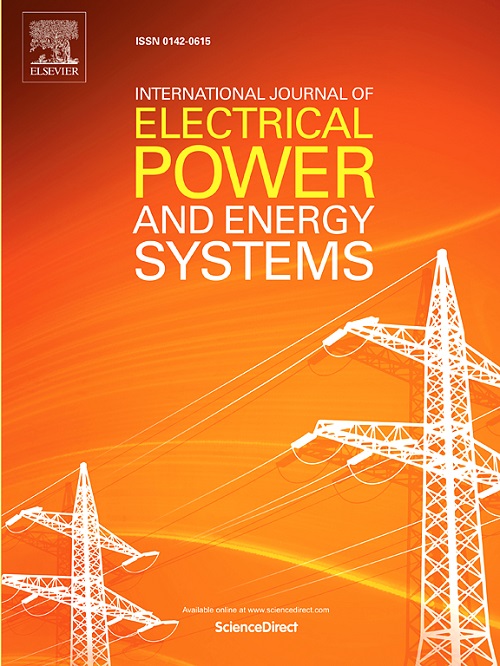结合基于频率的信号分解和优化增强方法的空间相关天气电力预测建模
IF 5
2区 工程技术
Q1 ENGINEERING, ELECTRICAL & ELECTRONIC
International Journal of Electrical Power & Energy Systems
Pub Date : 2025-05-16
DOI:10.1016/j.ijepes.2025.110698
引用次数: 0
摘要
由于可再生资源的日益一体化和最终用户工业的电气化,电力能源系统的有效规划变得越来越重要。然而,由于天气不可预测性和消费者行为的影响,短期电力负荷预测仍然具有挑战性。本研究提出了一个机器学习驱动的预测框架,该框架结合了空间相关的气象数据、时间特征和使用傅里叶变换的基于频率的信号分解。主要贡献是一种空间相关驱动的特征选择技术,用于选择理想的天气输入点,再加上从负载信号中提取主要频率成分以增强模型输入。我们对三种机器学习模型进行了评估:XGBoost、AdaBoost和多层感知器(MLP),数据集来自印度尼西亚的两个地点:巴厘岛和雅加达-万丹。XGBoost通过五个最常见的组件获得了最佳性能。对于Bali,模型的R2为0.89,相关系数(CC)为0.98,均方根误差(RMSE)为37.83;雅加达-万丹的R2为0.90,CC为0.95,RMSE为497.99。这些发现强调了将空间天气相关性与信号分解相结合以提高预测精度的优势,这对于可靠和高效的电力系统运行至关重要。本文章由计算机程序翻译,如有差异,请以英文原文为准。
Modelling of spatially correlated weather-based electricity forecasting using combined frequency-based signal decomposition with optimized boosting approach
Effective planning of electric energy systems is becoming increasingly vital due to the growing integration of renewable resources and the electrification of end-user industries. However, short-term electrical load forecasting continues to be challenging due to the effects of weather unpredictability and consumer behaviour. This research presents a machine learning-driven forecasting framework that incorporates spatially correlated meteorological data, temporal characteristics, and frequency-based signal decomposition using the Fourier Transform. The primary contribution is a spatially correlation-driven feature selection technique to choose ideal weather input sites, coupled with the extraction of predominant frequency components from the load signal to enhance model input. Three machine learning models are evaluated: XGBoost, AdaBoost, and Multi-Layer Perceptron (MLP) on datasets from two locations in Indonesia: Bali and Jakarta-Banten. XGBoost attained optimal performance with the five most frequent components. For Bali, the model produced an of 0.89, a correlation coefficient (CC) of 0.98, and a root mean square error (RMSE) of 37.83; for Jakarta-Banten, it gave an of 0.90, a CC of 0.95, and an RMSE of 497.99. These findings underscore the advantages of integrating spatial weather relevance with signal decomposition to improve prediction accuracy, which is essential for reliable and efficient power system operations.
求助全文
通过发布文献求助,成功后即可免费获取论文全文。
去求助
来源期刊
CiteScore
12.10
自引率
17.30%
发文量
1022
审稿时长
51 days
期刊介绍:
The journal covers theoretical developments in electrical power and energy systems and their applications. The coverage embraces: generation and network planning; reliability; long and short term operation; expert systems; neural networks; object oriented systems; system control centres; database and information systems; stock and parameter estimation; system security and adequacy; network theory, modelling and computation; small and large system dynamics; dynamic model identification; on-line control including load and switching control; protection; distribution systems; energy economics; impact of non-conventional systems; and man-machine interfaces.
As well as original research papers, the journal publishes short contributions, book reviews and conference reports. All papers are peer-reviewed by at least two referees.

 求助内容:
求助内容: 应助结果提醒方式:
应助结果提醒方式:


